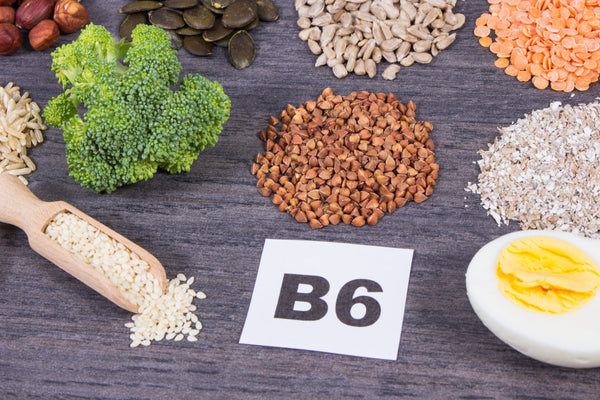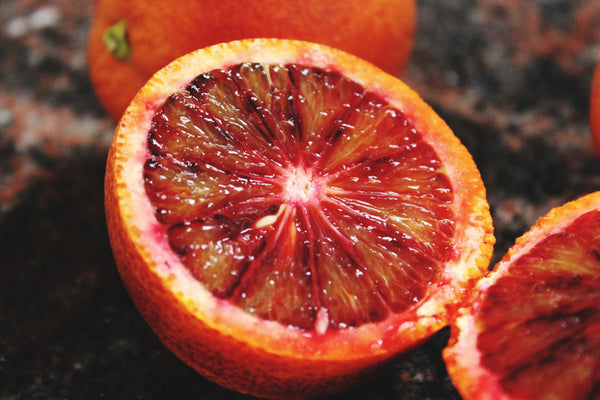
Zinc for Children: Dosage and Food Sources

You make sure the kids get all their vitamins, but what about their minerals? Minerals are just as important for your child's health.
Children need as much zinc as calcium and vitamin D. But do you know the recommended daily amount of zinc for children? In this article we cover Everything Parents Need to Know About Zinc for Children!
Read: 8 Foods that Contain the Best Zinc for Kids
What is Zinc?

Our bodies, animals, plants and the earth itself are all made of the same material. Many of the minerals necessary for our health are also essential constituents of the soil we walk on.
Read in full: What is Zinc: Benefits and Food Sources
Zinc is the 24th most abundant element in the earth's crust and one of the most essential minerals in the entire human body.
Zinc is technically a metal, but not all metals are bad for us. The human body requires microscopic amounts of many heavy metals in the form of minerals, including iron, copper, and magnesium.
What are the Benefits of Zinc for the Body?
Zinc is required for most of the body's important functions. The body needs zinc to produce genetic material in cells, including DNA itself.
Zinc is essential for pregnant people, developing babies, and growing children. Without Zinc, the body would face significant barriers to proper growth and development, creating irreversible consequences.
Zinc also helps strengthen the immune system in its fight to destroy harmful viruses and bacteria throughout the body.
A strong immune system is better equipped to fight any virus, and children are constantly exposed to germs. Schools and playgrounds are ideal environments for the spread of germs, and zinc helps make these environments a little safer for a child's body to handle.
Speaking of playgrounds, children often come home from playgrounds with minor scratches and bruises. You might give your child a little first aid and take them out for ice cream.
Zinc is what helps the body heal wounds, and also helps the body's ability to feel and smell. Not to mention, zinc plays an important role in protection when children play and eat ice cream.
What Are the Symptoms of Zinc Deficiency?
Zinc deficiency is relatively rare, but the consequences for developing children can be significant.
Children who do not get enough zinc in their diet may grow more slowly than other children. They may experience functional problems with their immune system and delayed puberty.
Children can develop hypogonadism, a condition in which the ovaries or testes fail to produce sufficient amounts of the hormones needed for puberty. Children with hypogonadism may experience fertility problems later in life.
Because zinc plays an important role in wound healing, children who are zinc deficient can develop lesions on their eyes and face and heal very slowly from cuts or scrapes.
Zinc deficiency can also cause changes in weight, appetite, hair loss, difficulty concentrating and diarrhea.
What is the Daily Amount of Zinc for Children?
The daily need for zinc intake will change throughout a child's life. It is very important to meet the target amount of zinc for children:
- 0 to 6 months - 2 mg daily
- 7 months to 3 years - 3 mg daily
- 4 years to 8 years -- 5 mg daily
- 9 years to 13 years -- 8 mg daily
- 14 years to 18 years -- 11 mg daily
- 14 years to 18 years – 9 mg daily
These are general guidelines, but a child's specific needs may differ. Children who are coping with deficiencies may require special supplementation that involves taking a certain amount of zinc for a predetermined period of time.
Children with absorption problems may need more vitamins or minerals to account for losses.
Before giving your child a zinc supplement, talk to your pediatrician about their individual needs. Without medical advice, it's impossible to know if zinc supplementation is necessary or how much zinc your child actually needs.
What Foods Are High in Zinc?
Oysters, shrimp, scallops, and crabs are excellent sources of zinc. These foods may not be suitable for everyone.
Pregnant people should be very careful when consuming seafood, especially if the seafood is undercooked or raw. Children over one year old can consume fully cooked seafood if they do not have a seafood allergy.
Chickpeas, lentils, beans, tree nuts, and peanuts contain zinc. Peanuts and tree nuts are not suitable for all children, but lentils, chickpeas, and chickpeas are generally well tolerated.
While nuts and legumes contain significant amounts of zinc, they also contain enzymes that can naturally inhibit zinc absorption.
It is best to take their nutrition facts with a grain of salt, as it is unlikely that one serving will provide the body with as much zinc as recommended.
Eggs, milk, meat, and poultry are common sources of zinc. If your child eats a balanced diet without restrictions, they are more likely to be consuming enough zinc at mealtimes to counteract the deficiency.
Should You Give Your Child a Zinc Supplement?
The only way to know if your child would benefit from a supplement is to talk to a pediatrician.
It can sometimes be difficult to know how much of each mineral a child is interested in because many foods contain small amounts.
Over the course of several days, your child may ingest as much zinc as they should. Fortified food products, such as bread, granola, and cereals, often contain zinc that parents forget about because of its unexpected source.
Talk to your pediatrician about vitamins and minerals your child may need in larger amounts.
Ask your doctor about vitamin supplementation. If your pediatrician agrees that supplements are a wise choice, choose a multivitamin designed to meet all of your child's needs.
That's the article Everything Parents Need to Know About Zinc for Children. May be useful!




